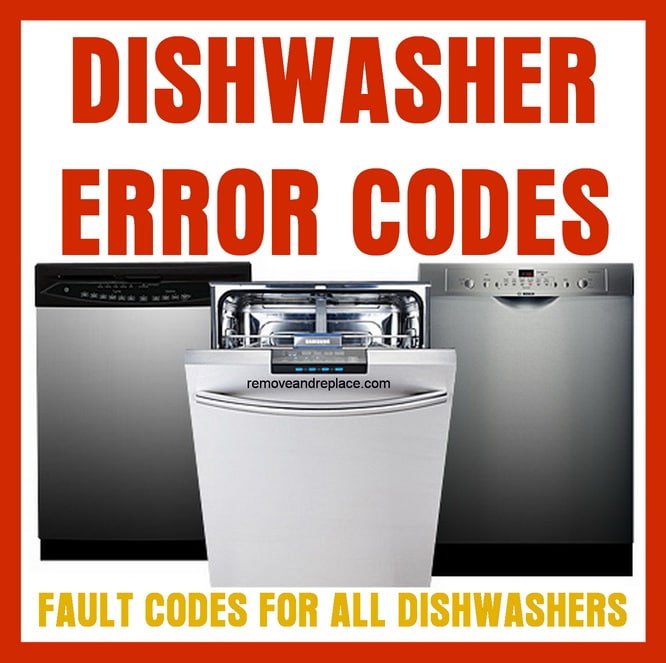
Dishwashers, like all modern appliances, are equipped with sensors and error codes to let us know when something isn’t right. These codes serve as the appliance’s way of communicating issues, much like how our cars flash warning lights to suggest a visit to the mechanic. Ignoring these signals can sometimes lead to more significant problems down the line, not to mention potential costly repairs. So, let’s dive into understanding what the F1 error code means and what you can do about it.
What Does the F1 Error Code Mean?
If you’ve seen the F1 code on your dishwasher’s display, you might be wondering what exactly is going wrong. The F1 error code typically indicates a problem with the heating element in your dishwasher. Think of the heating element as the water heater of your dishwasher, crucial for running a proper cleaning cycle. When it’s not functioning correctly, the appliance can’t reach the temperature needed to clean your dishes effectively.
Understanding the importance of the heating element can help you grasp why the F1 error code shouldn’t be ignored. Imagine trying to wash greasy dishes with cold water; it just doesn’t do the job. The heating element plays a pivotal role in ensuring that your dishes come out sparkly clean. So, if your dishwasher signals an F1 error, it’s essentially telling you that it needs help to perform this essential task.
Here’s the deal: if you ignore the F1 error code, your dishwasher might continue to run cycles, but the results won’t be satisfactory. Left unaddressed, it can lead to persistent cleaning problems and potentially worsen the issue, leading to more significant repairs or even a whole new dishwasher. It’s a bit like ignoring a leaky faucet—it’s not catastrophic today, but it might be tomorrow.
Common Causes of the F1 Error Code
Now, you’re probably asking yourself, “What causes this F1 error code in the first place?” There are a few common culprits when it comes to this pesky problem. One major cause is a faulty heating element itself. Over time, wear and tear can take a toll, making it less efficient or causing it to break entirely. Just like how our favorite T-shirt eventually wears out after too many washes, the heating element may simply need replacement after extensive use.
Another possible cause is issues with the thermostat. The thermostat regulates the temperature inside the dishwasher, ensuring everything heats up just right. If it’s malfunctioning, the appliance could mistakenly think it’s not heating properly, thus triggering the F1 error. This is similar to having a broken thermostat in your car—it might mislead you about how hot the engine really is.
Lastly, there could be problems with the circuit board, which controls the various functions and cycles within the appliance. A glitch in the board can sometimes send incorrect signals, leading to error codes even when other components are working fine. Think of it like your phone’s operating system freezing for no reason; it just needs a reset to function correctly again.
Steps to Address the F1 Error Code
Okay, so you’ve identified the F1 error code and its potential causes. What can you do about it? First, you might want to try a simple reset. Turn off your dishwasher, unplug it from the power source, and wait a few minutes. Then, plug it back in and start a new cycle. This can sometimes clear minor glitches, much like restarting your computer can solve random bugs.
If the error persists, you’ll need to get more hands-on. Check the heating element for any visible damage or breaks. This might require removing the bottom panel of the dishwasher, and if you’re not comfortable with that, it’s time to call in a professional for an inspection. They can test the element with a multimeter to see if it’s functional, and if necessary, replace it.
Should the heating element be fine, the next stop is checking the thermostat. Again, this might be more technical than some users are comfortable handling, so don’t hesitate to seek professional help. Professionals can pinpoint the exact issue, whether it’s a faulty thermostat or a more complex circuit board problem, and have the expertise to resolve it safely.
Preventative Tips and Final Thoughts
Now, nobody wants to deal with error codes regularly, so let’s talk about keeping your Frigidaire dishwasher running smoothly in the long term. Regular maintenance is key. Make sure to clean the filter regularly, ensure nothing is blocking the spray arms, and run a vinegar rinse every few months to keep the internal components clean.
It’s also a good idea to occasionally check the condition of your heating element and thermostat. By keeping an eye out for wear and tear, you might catch potential issues before they become error codes. Think of it like getting a regular dental checkup to avoid cavities rather than dealing with a root canal later.
In conclusion, while it might be tempting to ignore that F1 error code at first, addressing it head-on can save you from a lot of hassles in the future. Your dishwasher is an essential kitchen helper, and with the right care, it can continue making your life a little easier. So, the next time you see that F1 code, you’ll know just what to do!